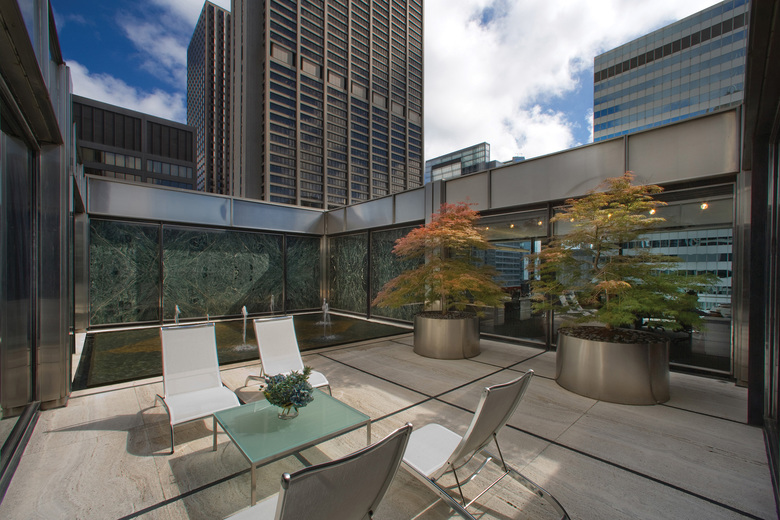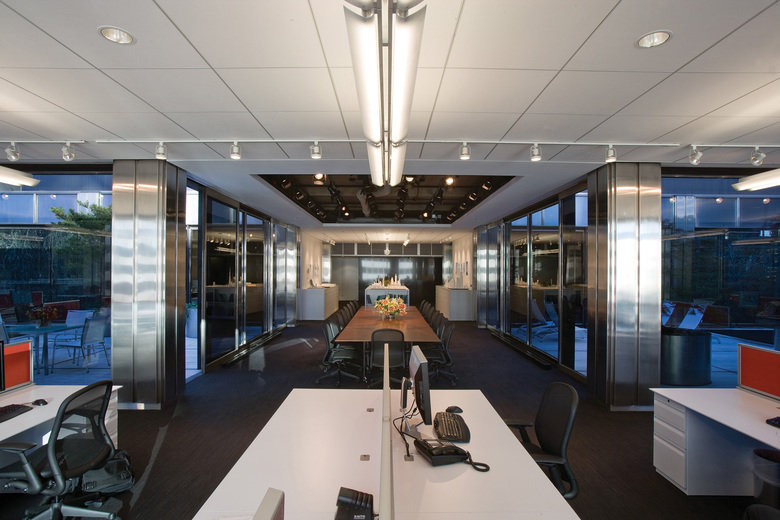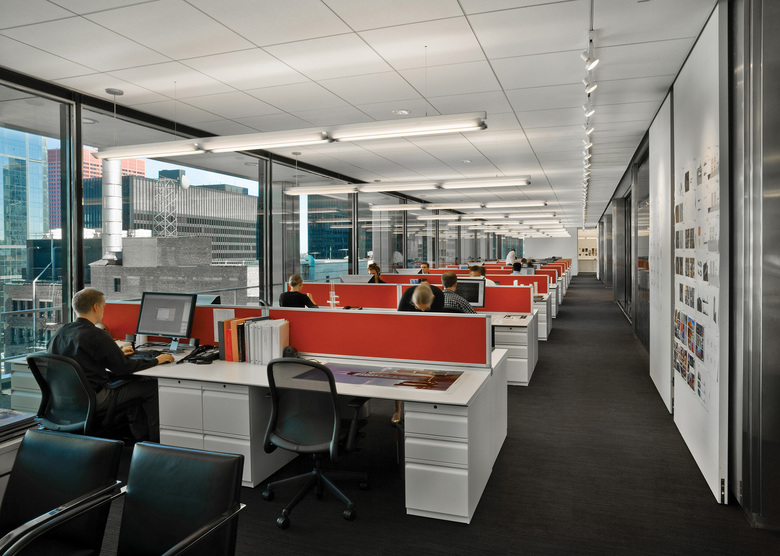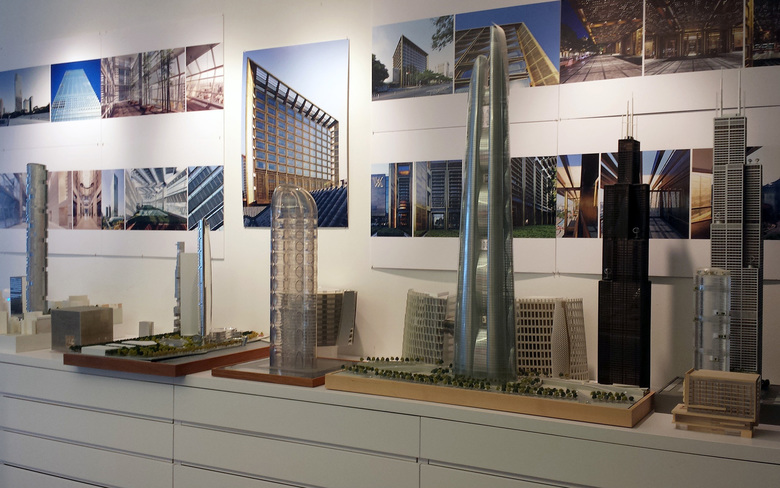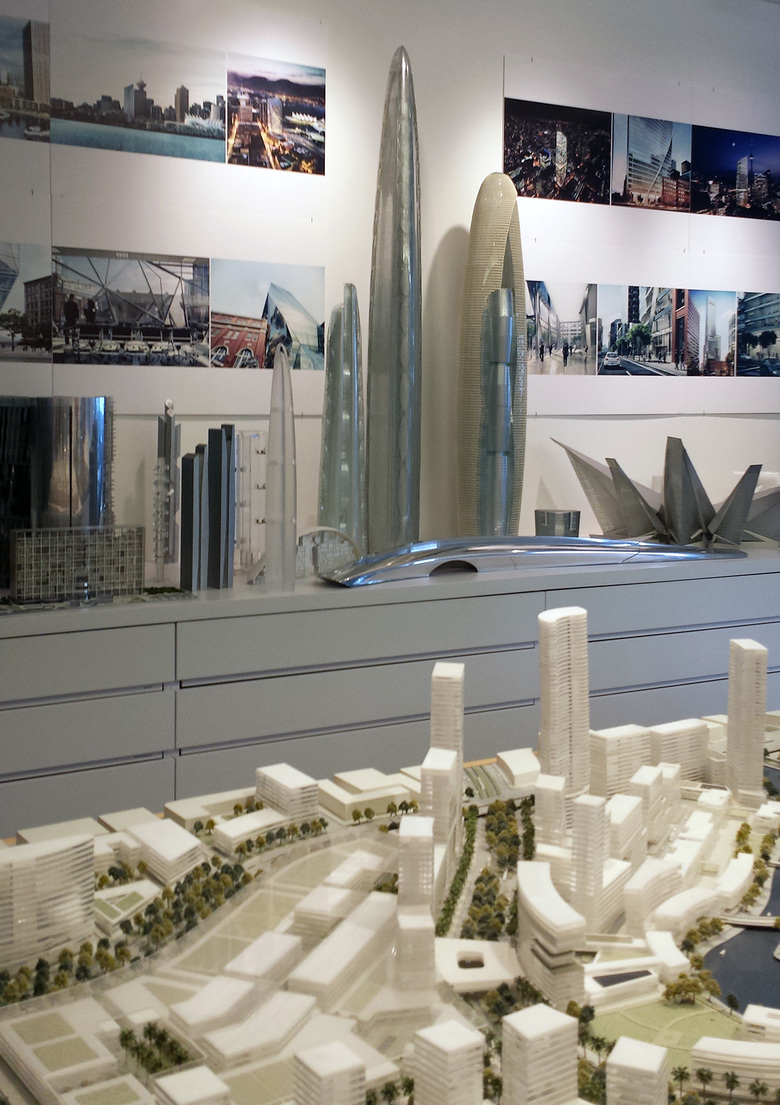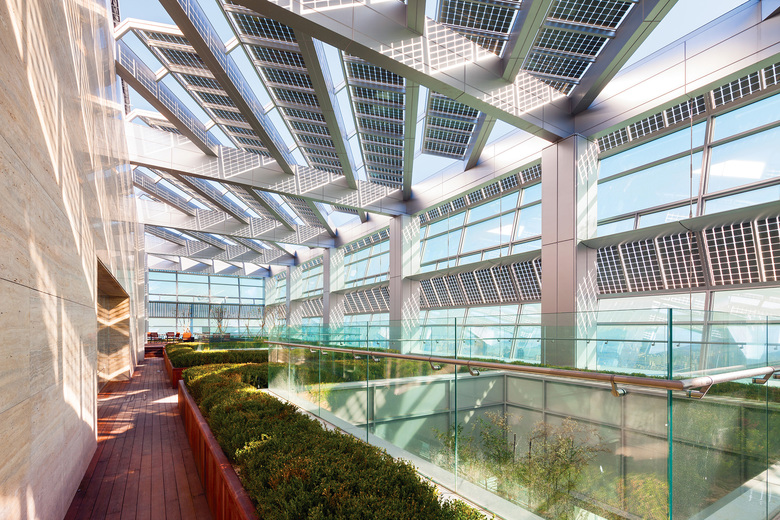Studio Visit: Adrian Smith + Gordon Gill Architecture
John Hill
12. October 2014
Photo: © Adrian Smith + Gordon Gill Architecture
AS+GG is on a roll, with many high-performance skyscrapers in the works, one of them soon to be the world's tallest. While in Chicago World-Architects got a tour of the office and chatted with a couple senior team members about some current projects.
Adrian Smith + Gordon Gill Architecture (AS+GG) celebrates its 8th anniversary on November 1, 2014, having been founded in 2006 by partners Adrian Smith, Gordon Gill, and Robert Forest. Like many firms in Chicago, the firm traces its roots back to Skidmore, Owings & Merrill; the three founders were partners in SOM's Chicago office and were responsible for notable projects in the city – the Millennium Park master plan, Trump Tower – and beyond – Burj Khalifa in Dubai, Jin Mao Tower in Shanghai, to name just a few. Now with over 100 employees, AS+GG departs from its predecessor in a well-honed vision toward what it calls "high-performance, energy-efficient and sustainable architecture on an international scale."
The lobby with some models of their supertall towers. Photo: John Hill/World-Architects
On my visit to the firm's office in the Loop at 111 West Monroe, a 23-story modern skyscraper designed by SOM in the late 1950s, I meet with Director Juan Betancur and Senior Architect Matthew Dumich. The building is a third of the Harris Bank Complex and AS+GG occupies the bank's former executive suite on the top floor, where two courtyards with fountains bring more daylight to the workspaces and serve as an inadvertent illustration of their vision. Betancur describes the firm's work as "environmental contextualism," a blend of Smith's cultural contextualism and aesthetic concerns and Gill's emphasis on high performance buildings responsive to climate. For all of its projects, Betancur continues, the starting point is weather data, which is analyzed well before architectural forms are considered.
A large conference table sits between the two courtyards. Photo: © Adrian Smith + Gordon Gill Architecture
The open-plan studio space overlooks the Loop's modern buildings. Photo: © Adrian Smith + Gordon Gill Architecture
By starting with weather, and continuing through a feedback loop enabled by employees proficient with energy modeling, AS+GG's designs – many of them skyscrapers and supertall towers – appear not quite like buildings as we know them. Towers taper, curve, and open themselves up to reduce wind drag (thereby reducing the size of the structure required, extremely important for such tall buildings); sometimes the openings incorporate wind turbines so the towers actually generate their own energy. The office is full of models that exhibit these tendencies, be it the aptly named Clean Technology Tower proposed for Chicago or the Wuhan Greenland Center in China. Models on display also illustrate the firm's broad capabilities, which start with architecture but extend to urban design, interiors, industrial design, and engineering; the last has a devoted firm called the Positive Energy Practice.
Models of built and unbuilt projects. Photo: John Hill/World-Architects
More models of built and unbuilt projects, including urban design schemes (foreground). Photo: John Hill/World-Architects
A skyscraper that looks conventional from afar but reveals the depth of the firm's sustainability commitment up close is the Federation of Korean Industries (FKI) office building in Seoul, completed at the end of last year. Comprised of a 50-story tower and a sculptural podium housing a conference center, the orthogonal glass building's presence on the skyline is aided by the expression of the multi-height atria that are visible in the photo below.
FKI tower. Photo: Namgoong Sun © Adrian Smith + Gordon Gill Architecture
FKI tower penthouse garden. Photo: Namgoong Sun © Adrian Smith + Gordon Gill Architecture
These light- and plant-filled spaces are echoed at the top of the building where photovoltaic panels on the roof are angled to the southern sun. PV panels are also found on the tower's curtain wall, which makes this one of the most interesting office buildings in recent years. Integrated into the spandrel areas of the southwest and northwest facades, and visible in the model photo below, the PV panels angled up to the sky do double duty: they generate energy for the building (a mandated requirement by the local government), and they angle the vision glass down to a degree that shades the interior from the summer sun. This is where the weather data and energy modeling comes in; the section of the curtain wall looks simple, but it is generated by the particulars of Seoul's location and climate, such that its lessons can applied to other projects in other places without being directly replicated.
Section model of FKI tower curtain wall. Photo: John Hill/World-Architects
One of the most important projects in the office is EXPO 2017, now under construction in Astana, Kazakhstan. Consisting of exhibition and cultural pavilions, a residential development for Expo workers, service areas (shopping, socio-cultural, educational and civic facilities), parks, and parking, the design of the 4-kilometer-square site responds to the Expo theme of "Future Energy" by relying entirely on renewable energy sources, primarily solar and wind. The plan is anchored by the spherical Kazakhstan Pavilion that is clad, Dumich tells me, in double-curved glass that was originally designed to include PV panels. Cost constraints moved the solar panels solely to the roofs of the buildings radiating from the center that will house the national pavilions.
Aerial rendering of Expo 2017 plan. Image: © Adrian Smith + Gordon Gill Architecture
Rendering of Kazakhstan national pavilion at Expo 2017. Image: © Adrian Smith + Gordon Gill Architecture
As Dumich further explains, housing the national pavilions in the curved buildings that circumscribe the central sphere – in lieu of participating country's designing their own standalone pavilions, as is the norm in Expos – helps to transition the site from "Expo Mode" to "Legacy Mode." The post-2017 condition replaces the parking with additional housing and converts the Expo buildings into an office and research park. This tactic designs for the long term while significantly reducing the waste often associated with Expos.
Solar panels will cover the roofs of the buildings devoted to the national pavilions at Expo 2017. Image: © Adrian Smith + Gordon Gill Architecture
Rendering of Kingdom Tower breaking through the cloulds. Image: © Jeddah Economic Company/Adrian Smith + Gordon Gill Architecture
Also under construction is AS+GG's most well known project, the Kingdom Tower in Jeddah, Saudi Arabia. When completed in about five years, the 1,000-meter (3,280 feet) tower will be taller than the current holder of the world's tallest building record, the Burj Khalifa, designed by Adrian Smith while at SOM. Employing a similar tapered "three-petal" structural system, the $1.2-billion mixed-use tower will include a luxury hotel, office space, serviced apartments, condominiums and the world’s highest observatory (originally designed as a helipad) at a height of 502 meters (1,647 feet).
Kingdom Tower's aerodynamic shape reduces structural loading due to "wind vortex shedding." Image: © Jeddah Economic Company/Adrian Smith + Gordon Gill Architecture
When it was unveiled in 2011, Kingdom Tower gained lots of attention for the audacity of proposing to knock the supertall Burj Khalifa from the top of the world's tallest list. This attention may have pegged AS+GG as a firm concerned with superlatives like tallest and biggest, but in the ensuing years it has become clear that their emphasis is most energy efficient, best performing, greenest and cleanest. Their goal of doing significant, large-scale work around the world has made them one of the most exciting firms to watch. At World-Architects, we are curious to see where AS+GG will go with its increased output of "environmental contextualism."
